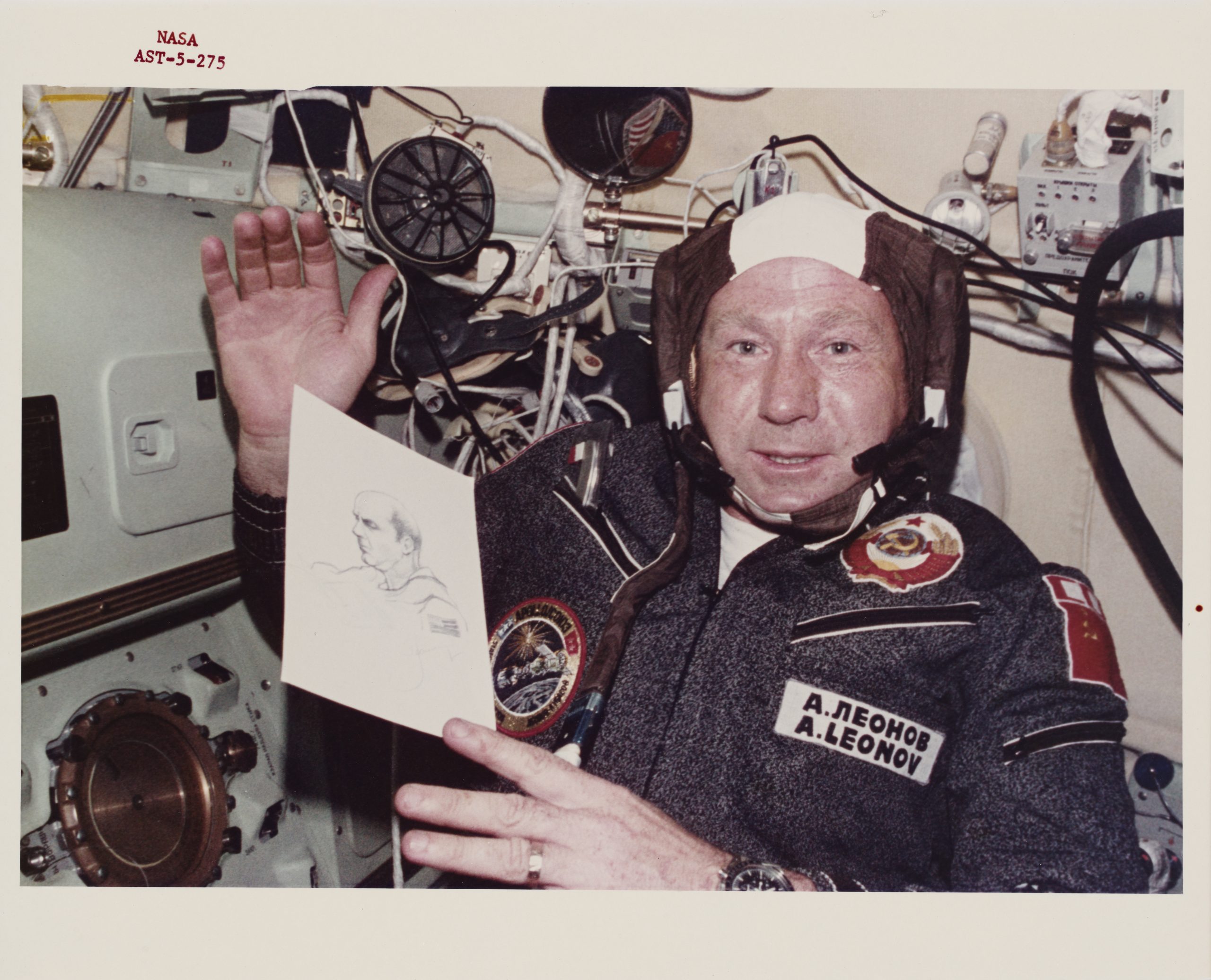
What’s the deal with Leonardo’s harpsichord-viola? Why were Impressionists obsessed with the color purple? Art Bites brings you a surprising fact, lesser-known anecdote, or curious event from art history. These delightful nuggets shed light on the lives of famed artists and decode their practices, while adding new layers of intrigue to celebrated masterpieces.
The first artwork ever made in space depicts an orbital sunrise, the moment when an astronaut, aboard a spacecraft in orbit around the Earth, witnesses the Sun rise over the horizon of the planet. It was created by Alexei Leonov, a Russian cosmonaut, who was also the first person to ever conduct a spacewalk.
The drawing is small, about the length of one of the colored pencils used by Leonov to create it, made by the Soviet Russian company Tactics. The drawing was made on a loose sheet of white paper and does not fill the page, but captures the gradation of colors Leonov observed.
For a realistic drawing, the work is fairly abstract. The Earth is only indicated by the curvature of the lines and the blue and black colors used to describe the watery surface. The Sun is depicted as a ball of red emerging from a field of blue. A deep swathe of black hints at the vastness of space.
While the drawing itself appears simple, the task of completing it was challenging considering the microgravity environment in which Leonov was working, without the convenience of gravity to hold down his drawing materials.
Alexei Leonov’s drawing depicting an orbital sunrise, 1965. Photo courtesy of the website for the Museum of the Yuri Gagarin Cosmonaut Training Center.
Leonov drew the little sketch while onboard the Voskhod 2 mission in March 1965. He was joined by just one other cosmonaut, Pavel Belyayev, who remained inside the spacecraft when Leonov conducted his spacewalk.
“It was so quiet I could even hear my heartbeat,” Leonov told The Guardian before his death in 2019. “I was surrounded by stars and was floating without much control. I will never forget the moment. I also felt an incredible sense of responsibility.”
The drawing was previously displayed in the exhibition, “Cosmonauts: Birth of the Space Age,” at London’s Science Museum in 2015, with the support of Russian space agency Roscosmos. Leonov attended the opening. Also included in that show was a tunic worn by Yuri Gagarin, the first person in space, with whom Leonov trained before his own mission.
Leonov, before his death, was twice awarded the honor of Hero of the Soviet Union for his contributions to space exploration. But the man who would become one of the most celebrated astronauts in history had always wanted to be an artist. During World War II, Leonov made a name for himself sketching wounded soldiers at a local hospital as well as battle scenes.
In 1953, Leonov began drawing seascapes of the Baltic and enrolled at the Academy of Arts in Riga. After graduating from art school, he surprisingly enrolled at an air force academy in what is now Ukraine, graduating in 1957 and qualifying as a parachute instructor. He was selected to join the Soviet Union’s new space program in March 1960, along with Gagarin and 18 others.